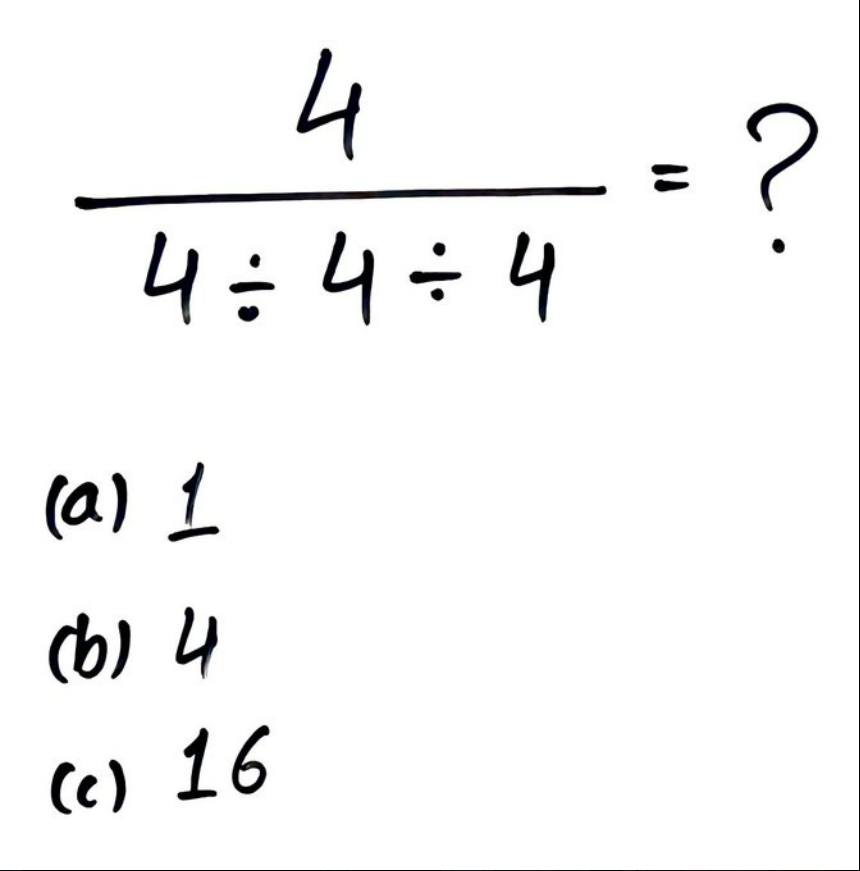How to Solve 4 ÷ (4 ÷ 4 ÷ 4)? Here’s the Right Answer!

When it comes to tricky math problems, especially ones that seem simple but hide a surprising complexity, the equation 4 ÷ (4 ÷ 4 ÷ 4) is a great example. At first glance, this expression may seem like an easy calculation. However, it’s the order of operations that makes this problem challenging for many people. Let’s break it down step by step to find the correct solution.
First Step: Understand the Order of Operations
The most important rule when tackling any mathematical expression is remembering the correct order of operations. Known by the acronym PEMDAS (Parentheses, Exponents, Multiplication and Division, Addition and Subtraction), this guide helps you determine which parts of the equation to solve first.
In this case, the expression we’re working with is 4 ÷ (4 ÷ 4 ÷ 4). Since the operations inside the parentheses must be calculated first, let’s start there.
Second Step: Work Inside the Parentheses
Inside the parentheses, we have 4 ÷ 4 ÷ 4. Now, keep in mind that division should be carried out from left to right. So, begin by dividing the first two numbers:
- 4 ÷ 4 = 1
After performing this division, you’re left with:
- 1 ÷ 4 = 0.25
Now the entire expression inside the parentheses is simplified to 0.25.
Third Step: Complete the Equation
Once the parentheses are simplified, the expression now becomes:
- 4 ÷ 0.25
Now, you can divide 4 by 0.25. If you’re unsure of how to divide by a decimal, think of it this way: dividing by 0.25 is the same as multiplying by 4. So:
- 4 ÷ 0.25 = 16
Final Answer
After following the proper order of operations, the correct answer to 4 ÷ (4 ÷ 4 ÷ 4) is 16. While this might seem complicated at first glance, breaking it down step by step makes the process easier to understand.

Why People Often Get This Wrong
It’s easy to see why some might struggle with this problem. The parentheses and multiple divisions create an illusion of complexity, leading people to miscalculate the order of operations. But once you remember to start inside the parentheses and divide from left to right, the path to the correct answer becomes clear.
A Helpful Reminder
The next time you face a math problem like this, just remember the order of operations. Whether you’re solving a simple equation or a more challenging one, PEMDAS is your best tool to avoid mistakes and find the right solution.





